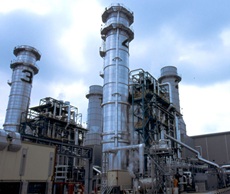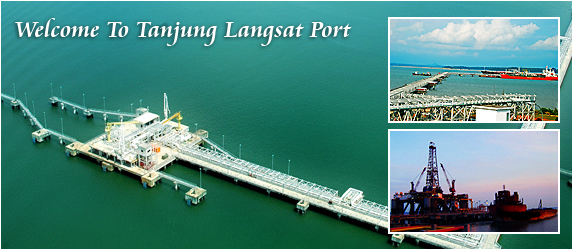
Article that came out of the Star newspaper on Saturday August 20, 2011.
Here are 12 reasons for a Manchester United IPO in Malaysia.
Dear Sir Alex,
I realise I should be addressing the Glazer family, the ultimate owners of the Manchester United Football Club, but they're Americans; it's painful to discuss football with people who insist on calling the sport soccer'. Sure, I could write to
chief executive David Gill. Then again, he's essentially a backroom boy and a bean counter. Bringing this up with him is no fun either.
The fact is, you're the club's heart and soul, and its face as well. You're the longest serving United manager, and in your 25 years at Old Trafford, you and the team have won almost everything there is to be won in club football. If you had not joined the Red Devils, the United fans would have nothing but past glory to sustain their love for the club.
In other words, they would be more like Liverpool fans.
That's why this open letter is for you. I believe you, more than anyone else, can appreciate what I'm strongly recommending for United. Plus, I suspect that if you tell the Glazers something, chances are they will sit up and take notice.
Early this week, I was surprised (and I must admit, a little hurt) to read that United is planning a US$1bil (RM3bil) initial public offering (IPO) in Singapore by the end of the year.
The choice of a listing in Asia is understandable. The English Premier League (EPL) has a huge following in the region, and United is arguably the most popular of the EPL clubs. But why Singapore, which was reportedly picked over Hong Kong? Apparently, Malaysia wasn't even on the shortlist.
I say United should float its shares on
Bursa Malaysia, the stock exchange here. I'd like to think that it's not too late to convince the Glazers to reconsider.
Typically, owners list their businesses where they think they can get the best valuation for their equity. Now, Sir Alex, you know a thing or two about putting a price on assets, what with all the players you have signed and sold over the years. It's all about the asset going to where it's most wanted and most likely to do well.
Here are 12 reasons one for each Premiership title you have collected for a United IPO in Malaysia:
1. We know how to value the game
Football betting in Malaysia generates tons of money, and we have a reputation as a hub for this activity. Although it's all illegal, it shows that this country has the know-how and experience to properly appreciate the worth of United shares.
2. No shortage of sponsors
Did you know that a Malaysian company is among the club's official sponsors, but there's none from Singapore?
Telekom Malaysia Bhd and United have signed a five-year contract “linking the two brands in marketing campaigns and promotions throughout Malaysia”. Relative to our size, businesses in Malaysia are very generous supporters of sports. Not one, but three teams in Formula One racing have significant Malaysian involvement. If United lists in Malaysia, there will immediately be a queue of local companies eager to slap their logos on United property and merchandise.
3. Our tycoons understand the football business
In May last year, a Malaysian consortium, including
Tan Sri Vincent Tan of the Berjaya group, acquired 36.4% of Cardiff City.
Datuk Chan Tien Ghee is now the club's chairman.
AirAsia Bhd's
Tan Sri Tony Fernandes had failed in a bid to take over West Ham United, but he persisted. He just became a majority shareholder of Queens Park Rangers, another London club. These developments say plenty about how serious we in Malaysia are about the EPL.
4. Investor relations will be a breeze
Be assured that United will have no problems getting the attention of the investing community in Malaysia. Every briefing for analysts, investors and the media will surely be packed. Each announcement is likely to be picked up and publicised. People here just can't get enough of United.
5. Western-owned businesses are highly prized
Investors in Malaysia are willing to pay a lot for a piece of a company controlled by a big name from the West. Among the most expensive stocks on Bursa Malaysia, in absolute terms, are
British American Tobacco (M) Bhd,
Nestle (M) Bhd,
DiGi.Com Bhd (a subsidiary of Norway's Telenor),
Dutch Lady Milk Industries Bhd,
Guinness Anchor Bhd, and
Shell Refining Co (Federation of Malaya) Bhd. They're all above RM10 per share. Given United's fantastic brand visibility, its shares can surely reach such a lofty price level.
6. No profit track record, no problem
It has been suggested that one reason United prefers Singapore to Hong Kong for an IPO is that the latter has tougher listing qualifications. You won't have that issue in Malaysia either. Assuming the club isn't making profits currently and thus can't pass the profit test under the Securities Commission's Equity Guidelines, it can take another route for listing in Malaysia the market capitalisation test. All United needs is a total market capitalisation of at least RM500mil upon listing. If the US$1bil Singapore listing is for 30% of United's equity, the club is estimated to have a market value of US$3.3bil (RM10bil).
7. Loss-making, debt-laden businesses don't scare us
It was reported in March that United's parent company,
Red Football Joint Venture Ltd, made a record loss of 108.9mil (RM533.6mil) for financial year ended June 2010, while total debt stood at 590.4mil (RM2.9bil). Over here, the probable response to that bit of news is a barely stifled yawn and a shrug of the shoulders. So what? Our investors aren't particularly averse to investing in companies engulfed in red ink and stacks of IOUs. Let's just say Malaysians recognise that to get great returns, they need to take on great risks.
8. Tune Group is Malaysian
The next time you have a gentle yet heartfelt discourse with a Premier League referee regarding your philosophy on the application of football rules, take a good look at his sleeves. The logo is that of Tune Group, Malaysia's own lifestyle and entertainment brand. I'm not saying that more refereeing decisions will go United's way just because the club's shares are listed on Bursa Malaysia, but never underestimate the power of 1Malaysia.
9. We're not a nation of whistleblowers
Considering your several run-ins with referees, I think you may fancy the idea that Malaysians are generally reluctant to blow the whistle. In fact, we had to change the laws recently to encourage whistleblowing. But relax, it may be a while before you see a lot of that going on here.
10. Red is fine with us
Unlike in Thailand or, say, Los Angeles, red is a broadly acceptable colour in Malaysia. It has no links to politics or gang identity. I note that your away kit for the current season is mostly blue. That's okay too.
11. Staunch support for United in Malaysia
The Red Devils' fans here are a very passionate and participative lot. This is evident in cyberspace. For example, the forum section of a website that calls itself the Manchester United Fan Club Malaysia Portal, has 8,000 members and 445,000 posts. Almost 9,400 people liked' its
Facebook page. But that's not a lot compared with the more than 42,000 likes' for the Manchester United FC (Malaysia) Facebook page. And this is probably only the tip of the iceberg. Don't you think such a devoted support base should be rewarded with a United IPO?
12. Our PM is a big fan
It's widely known that
Prime Minister Datuk Seri Najib Tun Razak, who's also Finance Minister, has been supporting United for a long time. On his Facebook page, “watching Manchester United games” is listed first among his favourite activities. On the other hand, his Singapore counterpart, Lee Hsien Loong, “enjoys reading, walking, listening to classical music and tinkering with computers”. That's on his CV on the Singapore Cabinet website. Really, need I say more?
Yours sincerely,
Errol
●
Executive editor Errol Oh is a fair-weather fan of Tottenham Hotspur. He doesn't believe in blind loyalty. If the team is not doing what it's supposed to, it doesn't deserve support.



















